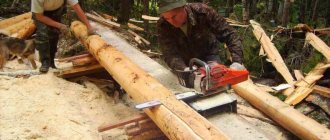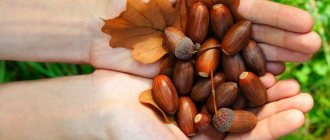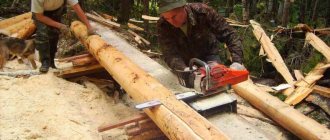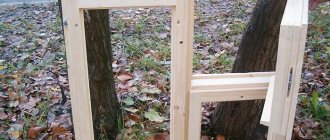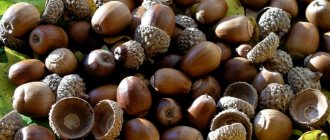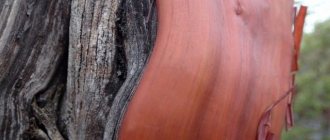Growing oak is a fairly lengthy and responsible process. Many people want to have a powerful and beautiful tree in their yard. Let's consider how you can plant this tree, how long the oak grows, the possible benefits and harm from it on your own site.
An oak is a large tree with many leaves and a strong trunk. Its fruits, acorns, contain a sufficient amount of useful microelements and are pasture for wild animals.
The natural habitat of oak is considered to be in the Northern Hemisphere with a temperate climate.
Planting material
Let's look at how to plant an oak tree from a seedling on a plot. To obtain a strong plant, an acorn or cuttings can be used as planting material. From an acorn it will take several years longer to grow.
The roots on the cuttings should be sprouted to the appropriate size so that they can painlessly gain a foothold in a new place. But there are no guarantees that it will take root.
There is a better chance of growing a tree from an acorn. This method is preferred. In the first years the plant develops faster, then the process slows down.
Description of the plant, its types and varieties
Oak is a plant known to everyone. But not many people know that it belongs to the beech family and there are many more varieties of oak in the world than it might seem. There are about five hundred of them.
Mature oak
Each type of oak differs from its counterparts:
- Crown shape
- Leaf shape
- Leaf color
- Fruit color
Despite the fact that sometimes oak does not look like itself, this durable and representative type of tree still has common features:
Big size. This is the main common feature. Oak has such a character that it is difficult to imagine it in dwarf forms. The name of the tree implies something solid, big.
Many gardeners have the desire to grow this beautiful tree, but do not have enough space. For such cases, low varieties have been bred.
Fruit. In all representatives of this family, the fruit is an acorn. Everyone knows this name. I immediately imagine the “berry” from which everyone made little men in childhood.
Different colors, different “caps” on it are exceptional features of the variety. It is interesting to know that such hats are called “plush” and are similar to the headdress of the Pope. The sizes of acorns also vary.
Durability. The expression “hundred-year-old oak” is beyond doubt and is often used in literature. The tree can live up to 500 years or more.
Frost resistance. Almost all types and varieties of oak are frost-resistant to a greater or lesser extent. Depending on the region of growth, leaves may remain on the tree or fall off.
Wind resistance. It takes very strong gusts of wind to tear an oak tree from its home.
Of the numerous representatives of oak trees, the following varieties are known and widespread:
- Petiolate
- Chestnut leaf
- Red
- Velvety
- Stone
- Large-fruited
- Willow
In Europe, the petiolate species is the most common. Decorative varieties based on this oak were created:
Atropurpurea. The leaves of this oak tree are dark red in color. In autumn they turn purple.
Oak leaves
Compacta. The variety was bred for small areas. You can’t call him a dwarf, but in comparison with an ordinary giant 30 meters high, a three-meter oak tree is a toy. The crown of this variety is rounded.
Variegata. A white leaf with green splashes is a varietal characteristic of such an oak.
Fastigiata Koster. The crown of the tree is formed without additional pruning in the form of a pyramid.
Red oak is also a member of the beech family. It is most commonly found in North America and is distinguished from its cousins by its red foliage.
Chestnut-leaved oak, due to its super frost-resistant wood, has long been felled for use in the production of building materials. Now this species is listed in the Red Book, and work is underway in the reserves to restore the population.
Despite the opinion that oak has no place in a garden plot, you can still find a garden decoration made from a large or small oak tree.
Expert opinion
Yulia Yurievna
I have a large garden and vegetable garden, several greenhouses. I love modern methods of cultivating plants and mulching the soil, and I share my experience.
Ask a Question
Planting an acorn
It is believed that it is easier to grow a tree from an acorn, even if it takes more time. It is necessary to find a healthy mother plant tree. In the fall, we select several dozen dry, ripe acorns and place them in prepared fertilized soil in disposable plastic cups.
There should be soil 3 cm thick above the acorn. Be patient and constantly moisten the soil. It shouldn't dry out. After the sprouts appear, you need to handle them carefully.
As the oak grows quickly, it will soon need to be transplanted into a large pot. In the first 10 years, the plant growth rate can remain up to 35 cm per year. Further growth slows down.
Part 2 - Technology of growing seedlings
Fruit ripening
The oak blossoms simultaneously with the beginning of leaf development, usually in May. Male flowers are collected in hanging, loose, light green inflorescences 4-6 cm long. Female flowers are found singly or 2-5 in spike-shaped inflorescences at the top of short peduncles. Pollination occurs with the help of wind.
Oak fruits, called acorns, develop during the flowering year and ripen in September-October, then fall. Acorns that fall early are usually wormy and are of no value. Each acorn contains one seed. The embryo consists of 2 fleshy cotyledons. Acorns grow singly or in several pieces (3-5) on a common peduncle 15-20 mm long. Their length reaches 15-25 mm, width 8-14 mm, elongated, oval shape, often pointed at the apex, the widest diameter is 1/3 or half of the total length.
The shell of an acorn in a state of full maturity is dry, brown (one-color), during the fall period it is bright green with a pink coating, although the seeds are fully ripe. A few days after falling, the color of the shell turns brown, and no stripes are visible on it. Oak seeds do not go into dormancy.
During the period when acorns fall from trees, the moisture content of acorns (relative to fresh mass) is very high, sometimes reaching 50% or higher. Harvesting begins when a significant number of good quality fruits are already lying on the ground. However, they should not be allowed to sit for too long (more than 2 weeks). During very wet or rainy periods, acorns should be collected as early as possible because, once they swell, they germinate easily. If the weather is damp and warm, the fruits sprout on the trees.
Fruit collection, pre-cleaning
The oak tree does not bear fruit every year. In years of poor harvest, wormy acorns of poor quality predominate. The acorns of all oak trees are food for various species of animals, especially wild boars.
The number of acorns in 1 kg is 130-650 pcs. – on average 250-400 pcs.
Acorns are collected in October, from the ground, usually some time after the first ones, most often damaged or worm-eaten, have fallen. You can lay out sheets under the trees, which makes harvesting much easier.
Due to the sensitivity of acorns to shock, harsh handling should be avoided, especially when pouring them out of bags onto a hard floor, and they should not be trampled. Due to high humidity, they need to be laid out to dry immediately, on the day of harvest, in a ventilated and cool place, in a layer no more than 10 cm thick.
Seeds left overnight in tied bags can spontaneously heat up quite strongly.
In autumn, some pests feed on acorns, especially oak weevil (Curculio glandium) larvae. Their presence cannot be determined without piercing, because the holes are formed only in the spring.
Hand-harvested acorns are kept clean because the cups and twigs are removed during harvesting. If this has not been done, you should start cleaning the crop as soon as possible. The method of soaking in water is especially suitable for this purpose - after collecting the surface impurities floating on the surface of the water with a sieve, remove the sunken acorns from the bottom of the tank and quickly dry them in a dry, ventilated place.
For large quantities of acorns, dryers are used, the flat bottom of which is made of stainless steel mesh or perforated sheet. Air heated to a temperature of 18-20 °C is supplied from below onto the acorns. This allows you to quickly dry them to a humidity of 42-48%, which is considered optimal for storing acorns.
Cleaning, drying
Acorns that are too wet germinate easily. Therefore, they are stored in cool, unheated, well-ventilated areas, laid out in a layer no thicker than 10 cm. It is necessary to sort them out and mix them, first 2 times a day, then once a day. This ensures a uniform and gradual decrease in humidity and prevents spontaneous heating of the seed material.
During such storage, you can observe condensation of water on the acorns of the top layer, “sweating.” The reason for this phenomenon is the respiration of seeds from the lower levels of the accumulated batch and the condensation of water vapor on the surface of cold acorns. When storing seeds with high yield humidity, you can notice that their weight decreases quickly, for example by 15%. Seeds with an initial moisture content of 42-48%, the weight of which decreases by a quarter (or even more), begin to lose their service life, as their moisture content drops below the critical level of 40-42%. Thus, the phenomenon of seed dehydration is accompanied by a loss of their viability.
Drying or temporary storage of acorns can be carried out on a flooring located on beams 22-25 cm above the floor of the room. This provides better ventilation and prevents excessive moisture in the seed material in the lower layers.
Storage
Practicing foresters have long used various methods of storing acorns, taking advantage of the lower temperatures of late autumn and winter. Acorns can be stored:
- in fresh sand in cold cellars;
- in earthen pits, ditches, layers with sand;
- under trees on a soil surface cleared of vegetation on a layer of straw, covered with straw and earth;
- under the tree on a thin layer of leaves, covering them first with leaves and then with snow.
The storage result depends on external temperatures, protection of the seeds with an insulating layer from frost and dehydration, the initial quality of the acorns and the experience of the forester. The last factor plays a significant role.
The storage of each batch should be preceded by an assessment of the quality of the seeds (an attempt at cutting) and determination of the moisture content of whole acorns. Traditional methods make it possible to save up to 70% of seeds, which are initially viable only until the first spring after harvest, except in cases of severe fungal infection. Acorns should be sown in the spring, after the final departure of winter.
The moisture content of acorns favorable for storage is in the range of 42-48%.
Based on the results obtained in England by Holmes and Bushevich (1956), using the example of stem oak, it was found that the optimal conditions for storing pedunculate oak acorns are temperatures of about -1 ° C, optimally - a temperature of -2 ° C, while the moisture content of the seeds should be in the range of 40-45%. Containers (plastic barrels) should not be tightly closed, since the seeds need to be provided with limited gas exchange with the environment through an appropriate ventilation system (perforation in the vertical axis of the container). When using traditional storage methods, one should not forget that air and soil temperatures rise with the beginning of spring, which can contribute to the germination of acorns even before the planned date of sowing them in the nursery.
Comparable results were obtained by mixing acorns with a substrate (dry peat, dry sawdust), as well as without using a substrate at all. The advantage of having a substrate is the ability to separate the seeds from each other and possibly limit the spread of fungi. From an economic point of view, it is irrational to store them in peat, which takes up half the tank capacity. After storage for 4 years at a temperature of + 1 ° C in air-dry peat with a humidity of 25-30%, germination of about 50% was obtained in laboratory conditions.
Planting, germination of seeds
Oak seeds do not go dormant and germinate easily at elevated temperatures. At a temperature of 20 °C, all epicotyls (shoots) germinate from the cotyledons after a maximum of 20 days. Autumn weather - warm, rich in precipitation, causes seeds to germinate immediately after falling on wet ground, if they have not yet begun to germinate on the trees before they fall out of the bowls.
The technology for germinating acorns involves the following stages and conditions:
- Acorns are soaked for 48 hours in water at room temperature.
- Prepare a room with a temperature of 20 ° C and moderate lighting, and pots; sand or sand mixed with peat is used as a substrate. Vermiculite can also be used as a substrate.
- The substrate is moistened. Soaked acorns are placed or lightly pressed into the sand by 1/3 of their length; the shell can be removed, but this is not necessary. When planted in vermiculite, acorns are immersed in it in a lying position to a depth corresponding to 2/3 of their diameter.
- According to the rules, germination should take place within 28-30 days.
Seeding in school
Many nurseries sow acorns in the fall, shortly after harvest. This poses a significant risk, as sowing may be damaged by wild boars, rodents and birds, and acorns may also rot if the soil is too wet. Great damage can be caused by frost and alternating freezing and thawing of the soil, especially in harsh climates during snowless winters.
In such situations, it may be necessary to cover the crops with a layer of mulch that insulates from low temperatures (straw, leaves). Due to such risks, there is a need to increase sowing rates, which contributes to the waste of seeds, so it is recommended, if possible, to sow acorns in April - May.
An obvious condition is the ability to properly store acorns in winter. The seedlings are then usually more numerous than after autumn sowing. Spring sowing also makes it easier to decide on sowing density, which depends on the method of carrying out this activity and the requirements placed on the seedlings in terms of age and quality characteristics.
Oak seedlings suitable for sale must meet quality standards regarding height (40 cm) and the appropriate height to thickness ratio at the root collar. Growing seedlings to this size in a nursery lasts 2-3 years, and with early sowing in peat soil in greenhouses, only one growing season is enough.
Acorns are sown in the nursery in early April, in rows, in well-prepared soil. The site must be carefully prepared, the soil must be dug up, and weeds must be selected. On clay soils, it is necessary to add sand to the planting rows. When sowing in a row or strip method, at a distance of rows of 25 cm from each other, 20-25 seeds are sown per 1 meter of sowing strip.
The sown seeds are covered with a layer of soil 2-5 cm thick, the thickness of the soil layer depends on the season:
- in autumn – 4-5 cm,
- in spring – 2-3 cm.
On light soils, you can sow deeper (up to 8 cm), especially in autumn.
The grooves can be filled with a material lighter than soil to reduce the resistance of the ground to rising.
Growing seedlings on a peat substrate in a greenhouse
This method ensures the production of plants with good growth characteristics during one growing season. Effective factors of the method:
- the presence of water, oxygen and mineral components supplied to the roots through peat;
- average temperature in the range of 25-30 °C;
- increased air humidity;
- appropriate seedling density;
- phytosanitary procedures.
Acorns are sowed in heated greenhouses in March-April on a leveled peat substrate and covered with a 2-centimeter layer of the same substrate. To get 80-100 seedlings suitable for sale from 1 m², 160-200 seeds capable of germination need to be sown on this planting area. Bulk mineral fertilizers are used for mineral nutrition of plants.
Plants should be provided with intensive protection due to conditions favorable for the emergence and development of infections. Treatments with benomyl, 50% with water are required. The greenhouse film is removed in July to stop the growth of seedlings in height, to promote thickening of the root collars and to allow the plants to become lignified. The seedlings are dug up before winter, sorted and delivered to consumers with their root system exposed, just like plants produced by the traditional system.
Seedling care
The plant is afraid of excess moisture; drainage holes are needed in the seedling pot. Planting a sprouted acorn is done to a depth of 5 cm. This will help warm up the sprout, making it easier for it to break through.
To begin with, disposable plastic cups that can be placed on the windowsill will suffice. They are covered with damp gauze to create a greenhouse effect. The soil dries out less, but at the same time continues to breathe.
As the seedling grows, the future oak tree is transplanted into a pot. For a successful transplant, a plastic cup is cut and the sprout is placed in a new place along with the soil. Thus, the seedling begins to develop painlessly in new soil with a large volume.
Selecting a place to plant oak
This tree is unpretentious to the soil of the middle zone. However, for best results, oak planting should take place in soil saturated with nutrients.
It is important not only to initially develop the growth of the seedling, but also to continue its intensity. Why do they take soil from the place where the mother tree grows?
When this is not possible, you can buy fertile peat in specialized gardening stores. The soil should be moist, but excess water can harm the root system.
Preparing soil and containers
For planting, purchase ready-made plastic containers or make them yourself. You can use containers from juices, sour cream, cut plastic bottles, etc. Container diameter is from 5 cm. I make holes in the bottom of the containers with a hot awl or a thick needle, excess water comes out through them, roots grow, which prevents them from bending. Containers are placed on pallets from which the soil will absorb the necessary water.
Oak is undemanding when it comes to soil, but experienced gardeners recommend purchasing ready-made universal mixtures for planting flowers, such as Violet soil. If there is no universal soil, you can take soil from the site and mix it in half with peat moss. To protect seeds and future seedlings from possible pests living in the soil, the soil is heated in a microwave oven for 15 minutes or in an oven at 150°C for 25 minutes.
Important! If you plant fruits in the fall, the grown oak seedlings will be weak, sickly, and do not take root well when transplanted into open ground.
Advantages and disadvantages of oak at home
The decision to plant such a tree must be approached responsibly. Before planting an oak tree on your property, you need to weigh the pros and cons. After all, it will take up a lot of space.
The tree has dense foliage, which provides great shade. Nothing grows near it. It has a powerful root system that can destroy the foundation of a building built nearby. You can use this to your advantage.
A strong root system can prevent soil movement. Taking advantage of the shade of a tree, you can put a gazebo under it and relax on a hot summer day.
Oak replanting
Before replanting an oak tree, you need to do the following:
- Prepare an area with a diameter of 20 m, which is what an adult tree will need.
- In the center we dig up an area with a diameter of 1.5 m to enrich it with oxygen.
- We dig a hole in the middle of the site, allowing us to freely place the root system of the seedling, and fertilize it with humus.
- We take the seedling out of the pot along with the soil and place it in the hole, cover it with soil and compact it.
- Fill the landing site well with water.
- We lay mulch around the seedling to conserve moisture.
Conclusion
In this text we looked at how oak grows. It is clear that this is a fairly serious tree. Whether to plant it on your personal plot is up to everyone to decide.
However, if a person’s ambitions and the size of the plot allow this to be done, then a properly planted oak tree under proper supervision will be a wonderful decoration for a private yard.


